Wikipedia:Wikipedia Signpost/2017-09-06/Featured content
Featured content
Warfighters and their tools or trees and butterflies: take your pick of the best of Wikipedia
Wat Phra Kaew, also known as the Temple of the Emerald Buddha, is Thailand's primary Buddhist temple. Located within the grounds of the Grand Palace, it is technically a royal chapel, as unlike normal temples it does not include living quarters for Buddhist monks.
(created by Ninaras (via Flickr) and nominated by Paul_012)
(created by Ninaras (via Flickr) and nominated by Paul_012)
This Signpost "Featured content" report covers material promoted from 31 July through 24 August. Text may be adapted from the respective articles and lists; see their page histories for attribution.
Featured articles
24 featured articles were promoted.
- Air Chief Marshal Donald Hardman (nominated by Ian Rose) was a senior Royal Air Force commander. He began his flying career as a fighter pilot in World War I, achieving nine victories to become an ace. During World War II, Hardman held senior staff and operational posts. He was Chief of the Air Staff (CAS) of the Royal Australian Air Force (RAAF) from 1952 to 1954, after which he served as a member of the British Air Council until retiring in 1958. Hardman joined the Royal Flying Corps in 1917. He flew Sopwith Dolphins with No. 19 Squadron, earning the Distinguished Flying Cross for his fighting skills. Between the wars he served with No. 31 Squadron in India and No. 216 Squadron in Egypt. A wing commander at the outbreak of World War II, Hardman was attached to the Air Ministry for several years before being posted in 1944 to South East Asia, where he commanded No. 232 (Transport) Group during the Burma campaign. He was appointed an Officer of the Order of the British Empire in 1940 and a Companion of the Order of the Bath in 1945, and was also mentioned in despatches. Finishing the war an air commodore, Hardman served successively as Assistant Chief of the Air Staff, Commandant of RAF Staff College, Bracknell, and Air Officer Commanding-in-Chief of Home Command, prior to becoming RAAF CAS in January 1952. He was appointed a Knight Commander of the Order of the Bath the same year. As CAS he was responsible for reorganising the RAAF's geographically based command-and-control system into a functional structure. Returning to Britain, he became Air Member for Supply and Organisation in May 1954, and was promoted to air chief marshal the following year. He was raised to Knight Grand Cross of the Order of the British Empire in January 1958, shortly before his retirement.
- The Walt Disney World Railroad (nominated by Jackdude101) is a 3-foot (914 mm) narrow-gauge heritage railroad and attraction located within the Magic Kingdom theme park of Walt Disney World in Bay Lake, Florida, United States. Its route is 1.5 miles (2.4 km) in length and encircles most of the park, with train stations in three different park areas. The rail line, constructed by WED Enterprises, operates with four historic steam locomotives originally built by Baldwin Locomotive Works. It takes about 20 minutes for each train to complete a round trip on the WDWRR's main line. On a typical day, the railroad has two trains in operation; on busy days, it has three trains. Since its opening on October 1, 1971, the railroad has become one of the world's most popular steam-powered railroads, with about 3.7 million passengers a year.
- Banksia serrata (nominated by Gderrin & Cas Liber) is a species of woody shrub or tree of the genus Banksia in the family Proteaceae. Native to the east coast of Australia, it is found from Queensland to Victoria with outlying populations on Tasmania and Flinders Island. Commonly growing as a gnarled tree up to 16 m (50 ft) in height, it can be much smaller in more exposed areas. This Banksia species has wrinkled grey bark, shiny dark green serrated leaves and large yellow or greyish-yellow flower spikes appearing over summer. The flower spikes, or inflorescences, turn grey as they age and pollinated flowers develop into large, grey, woody seed pods called follicles. B. serrata is one of the four original Banksia species collected by Sir Joseph Banks in 1770, and one of four species published in 1782 as part of Carolus Linnaeus the Younger's original description of the genus.
- The pigeon guillemot (nominated by RileyBugz & Sabine's Sunbird) is a species of bird in the auk family, Alcidae. Though it has five subspecies; all subspecies, when in breeding plumage, are dark brown with a black iridescent sheen, with a distinctive wing patch broken by a brown-black wedge. Its non-breeding plumage has a mottled grey and black upperparts and white underparts. The long bill is black, as are the claws. The legs, feet, and inside of the mouth are red. It closely resembles the black guillemot, which is slightly smaller and lacks the dark wing wedge present in the pigeon guillemot. Combined, the two form a superspecies. This seabird is found on North Pacific coastal waters, from Siberia through California to Alaska. The pigeon guillemot breeds and sometimes roosts on rocky shores, cliffs, and islands close to shallow water. In the winter, some birds move slightly south in the northern-most part of their range in response to advancing ice and migrate slightly north in the southern part of their range, generally preferring more sheltered areas. This species feeds on small fish and marine invertebrates, mostly near the sea floor, that it catches by pursuit diving. Pigeon guillemots are monogamous breeders, nesting in small colonies close to the shore. They defend small territories around a nesting cavity, in which they lay one or two eggs. Both parents incubate the eggs and feed the chicks. After leaving the nest the young bird is completely independent of its parents. Several birds and other animals prey on the eggs and chicks. The pigeon guillemot is considered to be a least concern species by the International Union for Conservation of Nature (IUCN). Threats to this bird include climate change, introduced mammalian predators, and oil spills.
- The Blue Flame (play) (nominated by RL0919) is a four-act play written by George V. Hobart and John Willard, who revised an earlier version by Leta Vance Nicholson. In 1920, producer Albert H. Woods staged the play on Broadway and on tour across the United States. Ruth Gordon, the main character, is a religious young woman who dies and is revived by her scientist fiancé as a soulless femme fatale. She seduces several men and involves them in crimes, including drug use and murder. In the final act, her death and resurrection are revealed to be a dream. The production starred Theda Bara, a popular silent film actress who was known for playing similar roles in movies. Critics panned the play, ridiculing the plot, dialog, and Bara's acting. Theater historian Ward Morehouse called it "one of the worst plays ever written". Bara's movie fame drew large crowds to theaters, and the play was a commercial success, breaking attendance records at some venues. Ruth Gordon was Bara's only Broadway role, and The Blue Flame was one of her last professional acting projects.
- True Detective (season 1) (nominated by Mike Christie & DAP), an American anthology crime drama television series created by Nic Pizzolatto, premiered on January 12, 2014, on the premium cable network HBO. The principal cast consisted of Matthew McConaughey, Woody Harrelson, Michelle Monaghan, Michael Potts, and Tory Kittles. The season comprised eight episodes, and its initial airing concluded on March 9, 2014. As an anthology, each True Detective season has its own self-contained story, following a disparate set of characters in various settings. Constructed as a nonlinear narrative, season one focuses on Louisiana State Police homicide detectives Rustin "Rust" Cohle (McConaughey) and Martin "Marty" Hart (Harrelson), who investigated the murder of prostitute Dora Lange in 1995. Seventeen years later, they must revisit the investigation, along with several other unsolved crimes. True Detective's first season explores themes of philosophical pessimism, masculinity, and Christianity; critics have analyzed the show's portrayal of women, its auteurist sensibility, and the influence of comics and weird horror fiction on its narrative. The series received positive reviews from critics and was cited as one of the strongest dramas of the 2014 television season. It was a candidate for numerous television awards, including a Primetime Emmy Award nomination for Outstanding Drama Series and a Golden Globe Award for Best Miniseries or Television Film, and won several other honors for writing, cinematography, direction, and acting.
- SMS Deutschland (1904) (nominated by Parsecboy) was the first of five Deutschland-class pre-dreadnought battleships built for the German Kaiserliche Marine (Imperial Navy). The ship was armed with a main battery of four 28 cm (11 in) guns in two twin turrets. She was built at the Germaniawerft shipyard in Kiel, where she was launched in November 1904. She was commissioned on 3 August 1906, a few months ahead of HMS Dreadnought. The latter, armed with ten large-caliber guns, was the first of a revolutionary new standard of "all-big-gun" battleships that rendered Deutschland and the rest of her class obsolete. Deutschland served as the flagship of the High Seas Fleet until 1913, when she was transferred to the II Battle Squadron. With the outbreak of World War I in July 1914, she and her sister ships were tasked with defending the mouth of the Elbe and the German Bight from possible British incursions. Deutschland and the other ships of the II Battle Squadron participated in most of the large-scale fleet operations in the first two years of the war, culminating in the Battle of Jutland on 31 May – 1 June 1916. Late on the first day of the battle, Deutschland and the other pre-dreadnoughts briefly engaged several British battlecruisers before retreating. After the battle, Deutschland and her three surviving sisters were assigned to coastal defense duties. By 1917, they had been withdrawn from combat service completely, disarmed, and tasked with auxiliary roles. Deutschland was used as a barracks ship in Wilhelmshaven until the end of the war. She was struck from the naval register on 25 January 1920, sold to ship breakers that year, and broken up for scrap by 1922.
- In the Battle of Leuthen, (nominated by auntieruth) fought on 5 December 1757, Frederick the Great's Prussian army used maneuver and terrain to decisively defeat a much larger Austrian force commanded by Prince Charles of Lorraine and Count Leopold Joseph von Daun, thus ensuring Prussian control of Silesia during the Third Silesian War (part of the Seven Years' War). The battle was fought at the Silesian town of Leuthen. By exploiting the training of his troops and his superior knowledge of the terrain, Frederick created a diversion at one end of the battlefield, and moved most of his small army behind a series of low hillocks. The surprise attack in the oblique order on the unsuspecting Austrian flank baffled Prince Charles; the Prince took several hours to realize that the main action was to his left, and not to his right. Within seven hours, the Prussians destroyed the Austrian force, erasing any advantage the Austrians had gained throughout the summer and fall of campaigning. Within 48 hours, Frederick had laid siege to Breslau, which resulted in that city's surrender on 19–20 December. Leuthen was the last battle at which Prince Charles commanded the Austrian Army, before his sister-in-law, Empress Maria Theresa, appointed him as governor of the Habsburg Netherlands and placed Leopold Joseph von Daun in command of the army. The battle also established beyond doubt Frederick's military reputation in European circles. After Rossbach (5 November), the French had refused to participate further in Austria's war with Prussia; after Leuthen (5 December), Austria could not.
- Benedetto Pistrucci (nominated by Wehwalt) was an Italian gem-engraver, medallist and coin engraver, probably best known for his Saint George and the Dragon design for the British sovereign coin. Pistrucci was commissioned by the British government to create the large Waterloo Medal, a project which took him thirty years to complete. Talented but temperamental, Pistrucci refused to copy the work of other artists. When in 1823 George IV demanded that an unflattering portrait of him on the coinage be changed with a new likeness to be based on the work of Francis Chantrey, Pistrucci refused and was nearly sacked. The Mint did not dismiss him, lest the money already spent on the Waterloo Medal be wasted. Pistrucci kept his place with the Mint for the rest of his life, eventually completing the Waterloo Medal in 1849, though because of its great size it could not be struck. After Pistrucci's death, the George and Dragon design was restored to the sovereign coin, and is still used today.
- Mercy Point (nominated by Aoba47) was an American science fiction medical drama that aired for one season on United Paramount Network (UPN) from October 6, 1998, to July 15, 1999. With an ensemble cast led by: Joe Morton, Maria del Mar, Alexandra Wilson, Brian McNamara, Salli Richardson, Julia Pennington, Gay Thomas, Jordan Lund, and Joe Spano, the series takes place in a 23rd-century hospital space station located in deep space and revolves around its doctors and nurses. Initially focused on ethical and medical cases, the storylines gradually shifted toward focusing on the characters' personal relationships to better fit UPN's primarily teen demographic.
- The Kaiman-class (nominated by Peacemaker67) were high-seas torpedo boats built for the Austro-Hungarian Navy between 1904 and 1910. A total of 24 boats were built by three shipbuilding companies. Yarrow Shipbuilders built the lead ship, Stabilimento Tecnico Triestino of Trieste built 13 boats, and Ganz & Danubius constructed the remaining 10 boats at their shipyards at Fiume. The class was considered to be a very successful design, and all boats saw extensive active service during World War I, undertaking a range of tasks, including escort duties, shore bombardments and minesweeping. All survived, although several were damaged by naval mines and collisions. One was torpedoed and badly damaged by a French submarine, and two sank an Italian submarine. All the boats were transferred to the Allies and scrapped at the end of the war, except for four that were allocated to the navy of the newly created Kingdom of Serbs, Croats and Slovenes. These were discarded and broken up between 1928 and 1930..
- The Getaway (1972 film) (nominated by Bluesphere) is a 1972 American neo-noir crime film directed by Sam Peckinpah. The screenplay by Walter Hill is based on the eponymous 1958 novel by Jim Thompson. The film follows imprisoned mastermind robber Carter "Doc" McCoy (McQueen), whose wife Carol (MacGraw) conspires for his release on the condition they rob a bank in Texas. A double-cross follows the crime and the McCoys are forced to flee for Mexico with the police and criminals in hot pursuit. Principal photography commenced on February 7, 1972, on location in Texas. It was scored by Quincy Jones, who was later nominated for a Golden Globe Award for Best Original Score. The Getaway was released on December 13, 1972. A box office hit earning over $36 million, it was the second highest-grossing film of the year, and was also one of the most financially successful productions of Peckinpah's and McQueen's careers. Upon release it got a negative reception, with Vincent Canby of The New York Times and Roger Ebert of the Chicago Sun-Times both giving the film indifferent reviews. Canby described it as "aimless", while Ebert complained that the story was contrived, calling it "a big, glossy, impersonal mechanical toy". Nevertheless, the film was well received in retrospective reviews and was among the heist films considered the best. In 1994, a remake was released to generally negative reviews, directed by Roger Donaldson and starring Alec Baldwin and Kim Basinger.
- Alan Bush (nominated by Brianboulton) was a British composer, pianist, conductor, teacher and political activist. A committed communist, his uncompromising political beliefs were often reflected in his music. He composed prolifically across a range of genres, but struggled through his lifetime for recognition from the British musical establishment, which largely ignored his works. A two-year period in Berlin in 1929–31 cemented Bush's political convictions and moved him from the mainstream Labour Party to the Communist Party of Great Britain which he joined in 1935. He wrote several large-scale works in the 1930s, and was heavily involved with workers' choirs for whom he composed pageants, choruses and songs. His pro-Soviet stance led to a temporary ban on his music by the BBC in the early years of the Second World War, and his refusal to modify his position in the postwar Cold War era led to a more prolonged semi-ostracism of his music. As a result, the four major operas he wrote between 1950 and 1970 were all premiered in East Germany. In his prewar works, Bush's style retained what commentators have described as an essential Englishness, but was also influenced by the avant-garde European idioms of the inter-war years. During and after the war he began to simplify this style, in line with his Marxist-inspired belief that music should be accessible to the mass of the people. Despite the difficulties he encountered in getting his works performed in the West he continued to compose until well into his eighties. He taught composition at the Royal Academy of Music for more than 50 years, published two books, was the founder and long-time president of the Workers' Music Association, and served as chairman and later vice-president of the Composers' Guild. His contribution to musical life was slowly recognised, in the form of doctorates from two universities and numerous tribute concerts towards the end of his life. He died aged 94 in 1995.
- A Wizard of Earthsea (nominated by Vanamonde) is a young adult fantasy novel written by the American author Ursula K. Le Guin, first published by the small press Parnassus in 1968. Regarded as a classic of fantasy and children's literature, the novel has been widely influential within the genre of fantasy. Set in the fictional archipelago of Earthsea, the story centers around a young mage named Ged, born in a village on the island of Gont. The book has often been described as a Bildungsroman or coming of age story, as it explores Ged's process of learning to cope with power and come to terms with death. The novel also carries Taoist themes about a fundamental balance in the universe of Earthsea, which wizards are supposed to maintain, closely tied to the idea that language and names have power to affect the material world and alter this balance. Although the structure of the story is similar to that of a traditional epic, critics have also described it as subverting this genre in many ways, such as by making the protagonist dark-skinned, in comparison to more typical white-skinned heroes. A Wizard of Earthsea received highly positive reviews, initially as a work for children, and later among a general audience as well. It won the Boston Globe–Horn Book Award in 1969 and was one of the final recipients of the Lewis Carroll Shelf Award in 1979.
- Hurricane Andrew (nominated by 12george1) (1992) was an Atlantic hurricane, the most destructive one ever in Florida. Named as a tropical storm on August 17, it hit the northwestern Bahamas six days later at Category 5 strength, leaving 1,700 people homeless, killing four, and disrupting the transport, communications, water, sanitation, agriculture, and fishing sectors. It struck Florida on August 24 with sustained wind speeds as high as 165 mph (270 km/h). In the city of Homestead in Miami-Dade County, it stripped many homes of all but their concrete foundations. Statewide, Andrew destroyed or damaged over 164,000 homes, killed 44 people, and left a record $25 billion in damage. A facility housing Burmese pythons was destroyed, releasing them into the Everglades, where they now number up to 300,000. The hurricane destroyed oil platforms in the Gulf of Mexico before hitting Louisiana, where it downed 80% of the trees in the Atchafalaya River Basin, devastated agriculture, and caused 17 deaths. The storm spawned at least 28 tornadoes along the Gulf Coast, mostly in Alabama, Georgia, and Mississippi. In total, Andrew caused $26.5 billion in damage and left 65 people dead.
- The rainbow pitta (nominated by Sabine's Sunbird) is a small passerine bird in the pitta family Pittidae, endemic to northern Australia. The species is most closely related to the superb pitta of Manus Island. A colourful bird, it has a velvet-black head with chestnut stripes above the eyes, olive-green upper parts, black underparts, a bright red belly and an olive-green tail. An Australian endemic, the rainbow pitta lives in the monsoon forests, as well as some drier eucalypt forests. It is a secretive and shy bird. The diet consists mainly of insects, arthropods and small vertebrates. Pairs defend territories and breed during the rainy season, as this time of year provides the most food for nestlings. The female lays three to four eggs with blotches inside its large domed nest. Both parents defend the nest, incubate the eggs and feed the chicks. Although the species has a small global range it is locally common and the International Union for Conservation of Nature (IUCN) has assessed it as being of least concern.
- The black-throated loon (nominated by RileyBugz) is a migratory aquatic bird found in the Northern Hemisphere, primarily breeding in freshwater lakes in northern Europe and Asia. It winters along sheltered, ice-free coasts of the north-east Atlantic Ocean and the eastern and western Pacific Ocean. The black-throated loon measures about 70 cm (28 in) in length and can weigh anywhere from 1.3 to 3.4 kilograms (2.9 to 7.5 lb). The timing of the breeding season is variable; in the southern part of its range, this loon starts breeding in April, whereas in the northern portion, it waits until after the spring thaw. It builds an oval-shaped nest that measures about 23 centimetres (9.1 in) across, either near the breeding lake or on vegetation emerging from it. The black-throated loon usually lays a clutch of two, rarely one or three, brown-green eggs with dark splotches. Eventually, the chick hatches, and is fed a diet of small fish and invertebrates. This contrasts with the mostly fish diet of the adult. To catch this food, it forages by itself or in pairs, very rarely foraging in groups. It dives from the water, going no deeper than 5 metres (16 ft). Most dives are successful. Overall, the population of this loon is declining, although the International Union for the Conservation of Nature (IUCN) still rates it as least concern, because the population decline is not rapid enough. The black-throated loon is protected under both the Migratory Bird Treaty Act of 1918 and the Agreement on the Conservation of African-Eurasian Migratory Waterbirds.
- The 1998 NFC Championship Game (nominated by Helltopay-27) was a National Football League (NFL) game played on January 17, 1999, to determine the National Football Conference (NFC) champion for the 1998 NFL season. The visiting Atlanta Falcons defeated the heavily favored Minnesota Vikings 30–27 in sudden death overtime to win their first conference championship and advance to the franchise's first Super Bowl appearance. As a result of their loss, the Vikings were eliminated from the playoffs and became the first team in the history of the NFL to compile a regular season record of 15–1 and not win the Super Bowl.
- Louise Bryant (nominated by Finetooth) was an American feminist, political activist, and journalist best known for her sympathetic coverage of Russia and the Bolsheviks during the Russian Revolution. Bryant, who married writer John Reed, her second husband, in 1916, wrote about Russian leaders such as Katherine Breshkovsky, Maria Spiridonova, Alexander Kerensky, Vladimir Lenin, and Leon Trotsky. Her news stories, distributed by Hearst during and after her trips to Petrograd and Moscow, appeared in newspapers across the United States and Canada in the years immediately following World War I. A collection of articles from her first trip was published in book form as Six Red Months in Russia in 1918. During the next year, she defended the revolution in testimony before the Overman Committee, a Senate subcommittee established to investigate Bolshevik influence in the United States. Later in 1919, she undertook a nationwide speaking tour to encourage public support of the Bolsheviks and to denounce armed U.S. intervention in Russia.
- John C. Breckinridge (nominated by Display name 99) was an American lawyer, politician, and soldier. He represented Kentucky in both houses of Congress and became the 14th and youngest-ever Vice President of the United States, serving from 1857 to 1861. He served in the U.S. Senate during the outbreak of the American Civil War, but was expelled after joining the Confederate Army. He was appointed Confederate Secretary of War in 1865.
- The Canadian Indian residential school system (nominated by Dnllnd) was a network of boarding schools for Indigenous peoples.The network was funded by the Canadian government's Department of Indian Affairs and administered by Christian churches. The school system was created for the purpose of removing children from the influence of their own culture and assimilating them into the dominant Canadian culture. Over the course of the system's more than hundred year existence, about 30%, or roughly 150,000, of Indigenous children were placed in residential schools nationally. At least 6,000 of these students are estimated to have died while residents. The residential school system harmed Indigenous children significantly by removing them from their families, depriving them of their ancestral languages, exposing many of them to physical and sexual abuse, and forcibly enfranchising them. Disconnected from their families and culture and forced to speak English or French, students who attended the residential school system often graduated unable to fit into either their communities or Canadian society. It ultimately proved successful in disrupting the transmission of Indigenous practices and beliefs across generations. The legacy of the system has been linked to an increased prevalence of post-traumatic stress, alcoholism, substance abuse, and suicide, which persist within Indigenous communities. On June 11, 2008, Prime Minister Stephen Harper offered a public apology on behalf of the Government of Canada and the leaders of the other federal parties in the Canadian House of Commons.
- The Beringian wolf (nominated by William Harris) is an extinct type of wolf that lived during the Ice Age. It inhabited what is now modern-day Alaska, the Yukon, and northern Wyoming. The Beringian wolf is an ecomorph of the gray wolf. It has been determined that these wolves are morphologically distinct from modern North American wolves and genetically basal to most modern and extinct wolves. The Beringian wolf has not been assigned a subspecies classification and its relationship with the European cave wolf (Canis lupus spelaeus) is not clear. The Beringian wolf was similar in size to the modern Yukon wolf but more robust and with stronger jaws and teeth, a broader palate, and larger carnassial teeth relative to its skull size. The unique adaptation of the skull and dentition of the Beringian wolf allowed it to produce relatively large bite forces, grapple with large struggling prey, and therefore to predate and scavenge on Pleistocene megafauna. The Beringian wolf preyed most often on horse and steppe bison, and also on caribou, mammoth, and woodland musk ox. At the close of the Ice Age, with the loss of cold and dry conditions and the extinction of much of its prey, the Beringian wolf became extinct. The extinction of its prey has been attributed to the impact of climate change, competition with other species, including humans, or a combination of both factors. In 2016 a study showed that some of the wolves now living in remote corners of China and Mongolia share a common maternal ancestor with one 28,000-year-old eastern Beringian wolf specimen.
- The black stork (nominated by Cas Liber & Adityavagarwal) is a large bird in the stork family Ciconiidae. Measuring on average 95 to 100 cm (37 to 39 in) from beak tip to end of tail with a 145-to-155 cm (57-to-61 in) wingspan, the adult black stork has mainly black plumage, with white underparts, long red legs and a long pointed red beak. A widespread, but uncommon, species, it breeds in scattered locations across Europe (predominantly in Spain, and central and eastern parts), and Asia to the Pacific Ocean. It is a long-distance migrant, with European populations wintering in tropical Sub-Saharan Africa, and Asian populations in the Indian subcontinent. When migrating between Europe and Africa, it avoids crossing the Mediterranean Sea and detours via the Levant in the east or the Strait of Gibraltar in the west. An isolated, non-migratory, population occurs in Southern Africa.
- Steve Biko (nominated by Midnightblueowl & Vanamonde) was a South African Xhosa anti-apartheid activist. Fighting racial segregation and white-minority rule in South Africa, Biko was at the forefront of the grassroots Black Consciousness Movement during the late 1960s and 1970s. Frustrated by the domination of white liberals in the anti-apartheid movement, he became a leading figure in the creation of the South African Students' Organisation in 1968. An African nationalist and African socialist, he was influenced by Frantz Fanon and the African-American Black Power movement. He promoted its slogan "black is beautiful", believing that black people needed to rid themselves of any sense of racial inferiority. In 1972, he helped found the Black People's Convention to spread these ideas among the wider population. Though the government banned Biko in 1973, he remained politically active. He was arrested in August 1977 and severely beaten by state security officers, resulting in his death. One of the earliest icons of the movement against apartheid, Biko is regarded as a political martyr.
Featured lists
14 featured lists were promoted this week.
- The FA Community Shield (nominated by Bloom6132) is an annual association football match organised by the Football Association and presently contested between the champions of the Premier League and the winners of the FA Cup. In the event where a club achieves the domestic double, it will go on to face the league runners-up instead. The match is played every August as the "traditional curtain-raiser" to the new English domestic football season. Since 1974, all but seven of the matches have been held at either the original or new Wembley stadiums. Stamford Bridge, which was where the inaugural Charity Shield was played in 1908, has hosted the second-most finals with 11. Manchester United holds the record for the most victories, winning the competition 21 times since its inception. They also hold the distinction of having the most appearances (30) and most losses (9). Although the Shield has had its share of historical moments – from Eric Cantona's first career hat-trick in 1992, to Manchester United's first loss of 1999 ending a streak of 33 consecutive games without a defeat – it has been dismissed as a ceremonial friendly that is not on par with other domestic honours in terms of prestige.
- Nani filmography (nominated by Pavanjandhyala) Nani is an Indian film actor and producer who works predominantly in Telugu cinema and appears in a few Tamil-language films. He made his acting debut in Ashta Chamma. After Ashta Chamma's commercial success, Nani played the lead roles in three Telugu films in the next two years: Ride (2009), Snehituda... (2009) and Bheemili Kabaddi Jattu (2010). In 2011, Nani collaborated with B. V. Nandini Reddy on the romantic comedy Ala Modalaindi. The same year, he made his Tamil cinema debut with Anjana Ali Khan's Veppam. The following year, Nani collaborated with S. S. Rajamouli and Gautham Menon on the Telugu-Tamil bilingual Eega and the romance film Yeto Vellipoyindhi Manasu respectively. The former earned Nani an award in the Best Hero category at the 2013 Toronto After Dark Film Festival. He received the Nandi Award for Best Actor for his performance in Yeto Vellipoyindhi Manasu. Nani ventured into film production in 2013 as a co-producer for the film D for Dopidi. He faced three box office failures in the upcoming years. Nani termed it a "low phase" in his career and worked on the "planning of films and the timing of their release". He then played the lead role in Nag Ashwin's Yevade Subramanyam (2015). Nani later starred in a comedy film Bhale Bhale Magadivoy (2015). It was the actor's first blockbuster success, and earned him the Critics Award for Best Actor - South at the 63rd Filmfare Awards South ceremony. With his subsequent releases, the profitable ventures Krishna Gaadi Veera Prema Gaadha (2015) and Gentleman (2015), he gained stardom in Telugu cinema. Nani later played the lead in the commercially successful Telugu films Majnu (2016), Nenu Local (2017) and Ninnu Kori (2017).
- The Australian Cricket Hall of Fame (nominated by The Rambling Man & Mattinbgn) is a part of the Australian Gallery of Sport and Olympic Museum in the National Sports Museum at the Melbourne Cricket Ground. This hall of fame commemorates the greatest Australian cricketers of all time, as the "selection philosophy for the hall of fame focuses on the players' status as sporting legends in addition to their outstanding statistical records". Inductees must be retired from international cricket for at least five years. The Australian Cricket Hall of Fame was an idea conceived by the Melbourne Cricket Club to honour Australia's legendary cricketers. It was opened on 6 December 1996 by the then Prime Minister, John Howard. The hall of fame opened with ten inaugural members, and has since grown to encompass 46 individuals.
- The 2015 North Indian Ocean cyclone season (nominated by Iune) was a below-average tropical cyclone season which featured the highest number of deaths since the 2010 season. Despite inactivity in the Bay of Bengal caused by the ongoing El Niño, the season produced an above-average number of tropical cyclones in the Arabian Sea. The first storm of the season, Ashobaa, formed on 7 June, while the final storm of the season, Megh, ultimately dissipated on 10 November. A total of twelve depressions were recorded, of which nine intensified into deep depressions. Of these nine, a total of four further strengthened into cyclonic storms, while two attained their peaks as extremely severe cyclonic storms.
- Holby City is a British medical drama television series that has been broadcast on BBC One since 12 January 1999. The series was created by Tony McHale and Mal Young as a spin-off from the BBC medical drama Casualty, which is set in the emergency department of the fictional Holby City Hospital, based in the equally fictitious town of Holby. Young wanted to explore what happened to patients treated in Casualty once they were taken away to the hospital's surgical wards. He opined that Casualty limited itself to "accident of the week" storylines, while Holby City allowed the possibility of storylines about long-term care, rather than immediate life-and-death decisions. Holby City has earned various awards and nominations (nominated by Soaper1234) , with the nominations in categories ranging from Best Drama to its writing and editing work to the cast's acting performance.
- Quantico is an American drama thriller series that premiered on September 27, 2015 on American Broadcasting Company (ABC). Created by Joshua Safran who also serves as an executive producer, along with Mark Gordon, Robert Sertner and Nicholas Pepper. The series follows a group of young FBI recruits, or New Agent Trainees (NATs); each has a specific reason for joining the FBI Academy in Quantico, Virginia. As of May 15, 2017, 44 episodes of Quantico (nominated by Krish!) have aired, concluding the second season. On May 15, 2017, ABC renewed the series for a third season, consisting of 13 episodes.
- American singer and songwriter Madonna has recorded songs for a total of twenty-one albums (nominated by IB & Calvin999) (comprising of thirteen studio albums, three compilation albums, three soundtrack albums and two remix albums). She has provided background vocals for songs recorded by other artists, as well as featured on duets.
- The Charmed literary franchise is a series of novels and short stories based on the eponymous television show, which aired from 1998 to 2006. The franchise consists of forty-four novels and eleven short stories (nominated by Aoba47) released in two anthologies, with ten guide books. Scholarly essay collections on the show were also published.
- The Glossary of bird terms (nominated by Fuhghettaboutit) a glossary of common English language terms used in the description of birds—warm-blooded vertebrates of the class Aves, characterized by feathers, the ability to fly in all but the approximately 60 extant species of flightless birds, toothless, beaked jaws, the laying of hard-shelled eggs, a high metabolic rate, a four-chambered heart and a strong yet lightweight skeleton. Among other details such as size, proportions and shape, terms defining bird features developed and are used to describe features unique to the class—especially evolutionary adaptations that developed to aid flight. There are thousands of terms that are unique to the study of birds. The glossary makes no attempt to cover them all, concentrating on terms that might be found across descriptions of multiple bird species by bird enthusiasts and ornithologists. Though words that are not unique to birds are also covered, such as "back" or "belly", they are defined in relation to other unique features of external bird anatomy, sometimes called "topography". As a rule, the glossary does not contain individual entries on any of the approximately 9,700 recognized living individual bird species of the world.
- American band Ivy has released a total of 31 albums, EP's, singles, and music videos. (nominated by Carbrera) They are comprised of six studio albums, one extended play (EP), fifteen singles, one promotional single, and eight music videos.
- Vishwaroopam is a 2013 Indian spy thriller film directed by Kamal Haasan. Vishwaroopam was made on a budget of ₹950 million, and grossed ₹2.2 billion overall. The film won 11 awards from 34 nominations (nominated by Ssven2); its direction, performances of the cast members, music, cinematography, editing, art direction and choreography have received the most attention from award groups. At the 60th National Film Awards, Vishwaroopam won the Best Choreography and Best Production Design. It received three nominations: Best Film, Best Director and Best Actor at the 61st Filmfare Awards South, winning none. The film won three awards from sixteen nominations at the 8th Vijay Awards, including Best Film (Kamal, S. Chandrahaasan, Potluri), Best Supporting Actress (Jeremiah), and Best Villain (Bose); Kamal won the Best Actor and Favourite Director, while Ilayaraaja and Taweepasas received the award for Best Art Director. Vishwaroopam received seven nominations at the 3rd South Indian International Movie Awards. Among other wins, the film received four Ananda Vikatan Cinema Awards and two awards at the Jagran Film Festival.
- American singer Ariana Grande's discography (nominated by U990467) has spanned sixty-nine items, made up of three studio albums, one remix album, two extended plays (EPs), thirty-three singles (including nine as a featured artist), five promotional singles and twenty-four music videos.
- The International Dublin Literary Award (nominated by The Rambling Man) is an international literary award presented each year for a novel written in English or translated into English. It aims to promote excellence in world literature and is solely sponsored by Dublin City Council, Ireland. At €100,000, the award is one of the richest literary prizes in the world. If the winning book is a translation (as it has been nine times), the prize is divided between the writer and the translator, with the writer receiving €75,000 and the translator €25,000. The first award was made in 1996 to David Malouf for his English language novel Remembering Babylon. Nominations are submitted by public libraries worldwide – over 400 library systems in 177 countries worldwide are invited to nominate books each year – from which the shortlist and the eventual winner are selected by an international panel of judges (which changes each year). The most recent winner of the award is José Eduardo Agualusa for A General Theory of Oblivion.
- The Marvel Cinematic Universe (MCU) is a media franchise and shared fictional universe that is the setting of superhero television series based on characters that appear in Marvel Comics publications. To date, over 200 actors and actresses (nominated by Favre1fan93) have appeared in the MCU.
Featured pictures
6 featured pictures were promoted this week.
-
The rufous-tailed flycatcher (Myiarchus validus) is an endemic species, only found on the Island of Jamaica
(created and nominated by Charlesjsharp -
White peacock (Anartia jatrophae jatrophae), a butterfly species found in Central and South America and the southeastern United States
(created and nominated by Charlesjsharp) -
A three-quarter portrait of Ermina Zaenah, an Indonesian actress who acted in thirty films during the 1950s and produced four.
(restored and nominated by Chris Woodrich) -
The Lucca Madonna is a 1436 oil painting of the Madonna and Child by the Early Netherlandish master Jan van Eyck. It shows Mary seated on a wooden throne and crowned by a canopy, breastfeeding the infant Christ.
(created by Jan van Eyck and nominated by Armbrust) -
Pied-winged swallow (Hirundo leucosoma) in The Gambia. This species only occurs in Western Africa.
(created and nominated by charlesjsharp)
The fishing village of Reine on the Reinefjorden in Norway
(created by Simo Räsänen and nominated by Chris Woodrich)
(created by Simo Räsänen and nominated by Chris Woodrich)








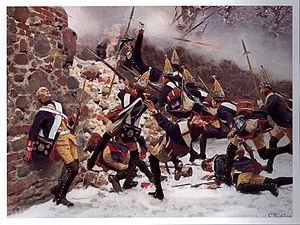
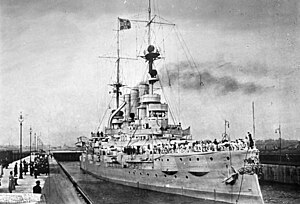












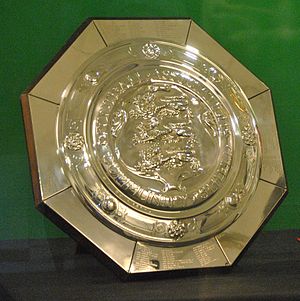
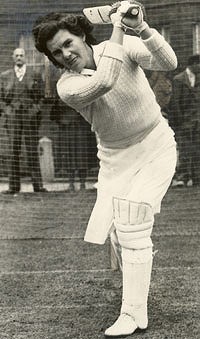

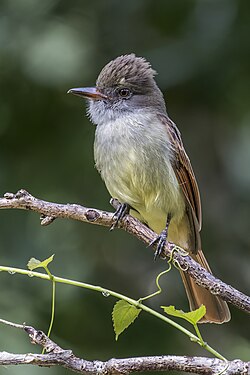



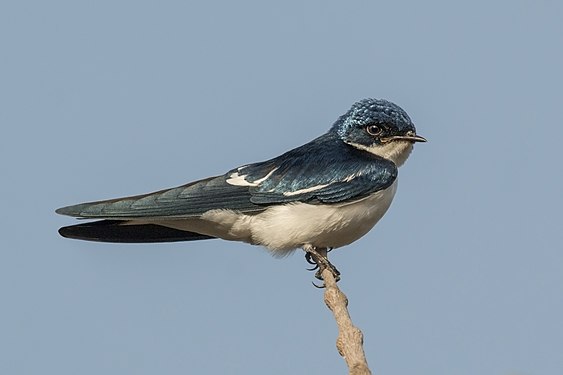


Discuss this story